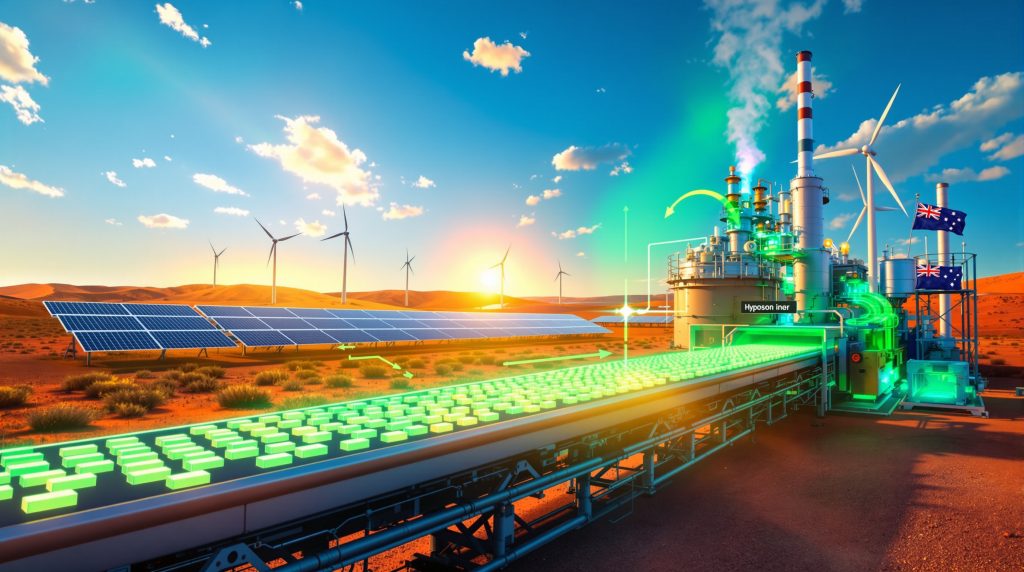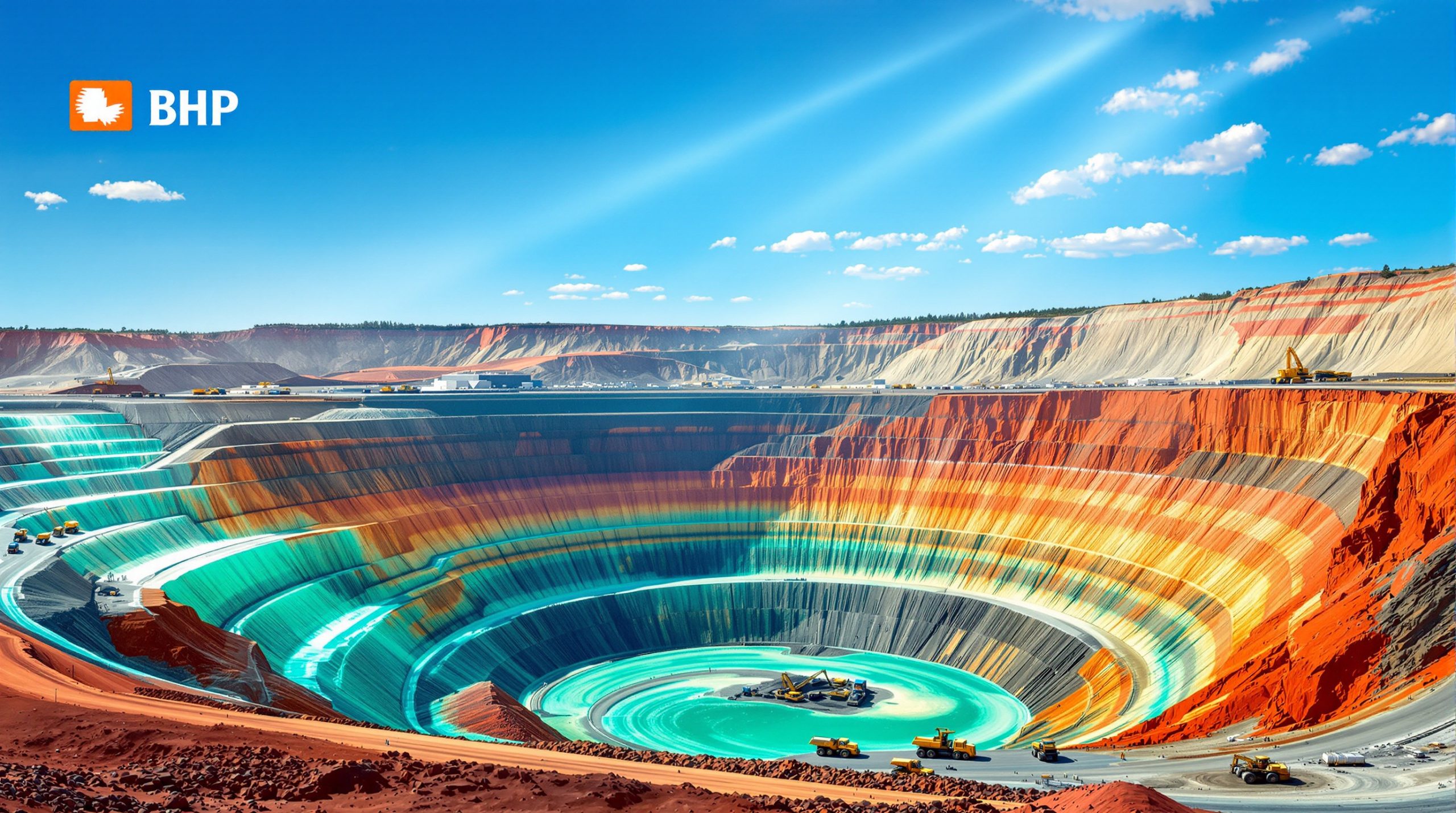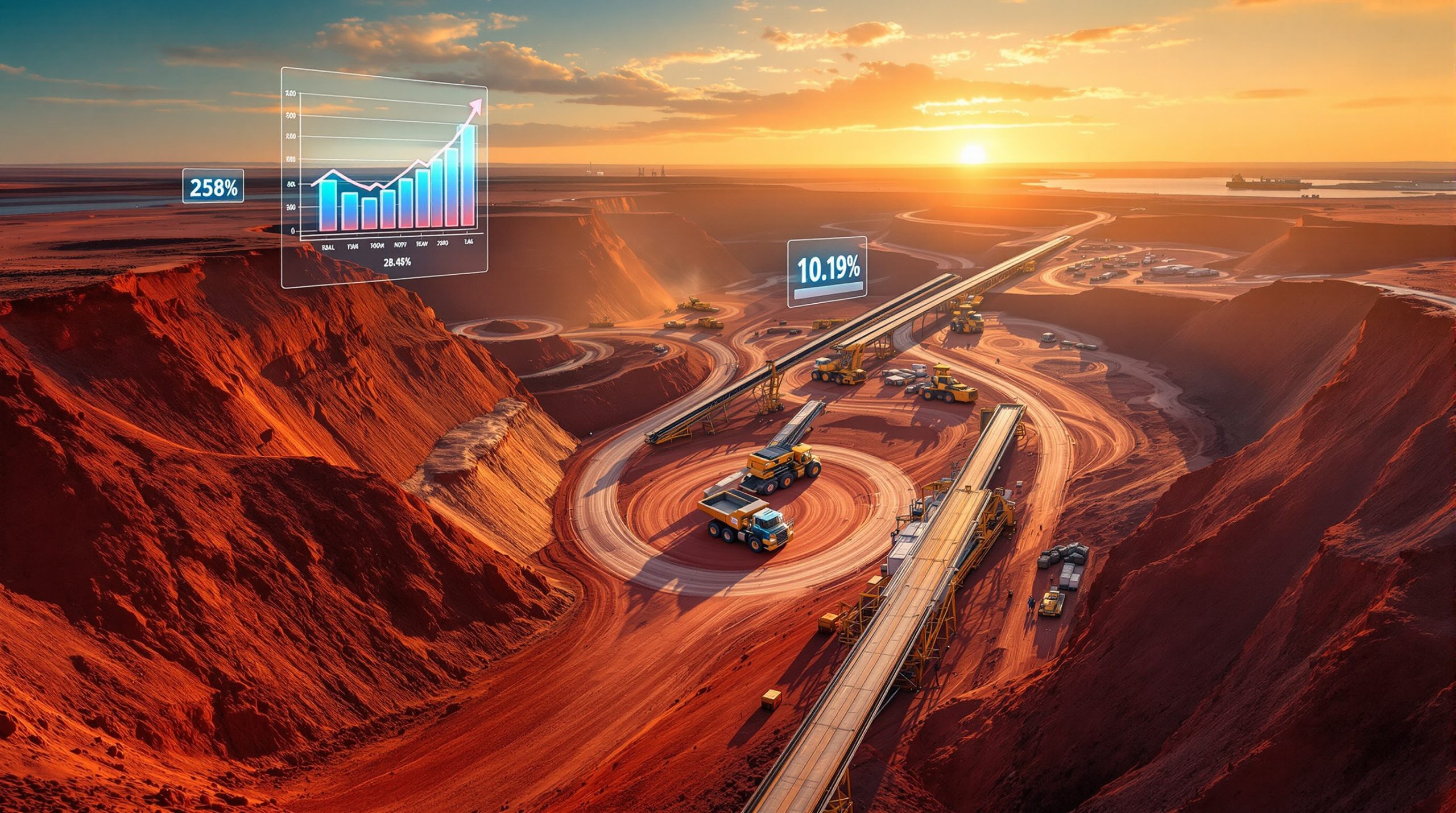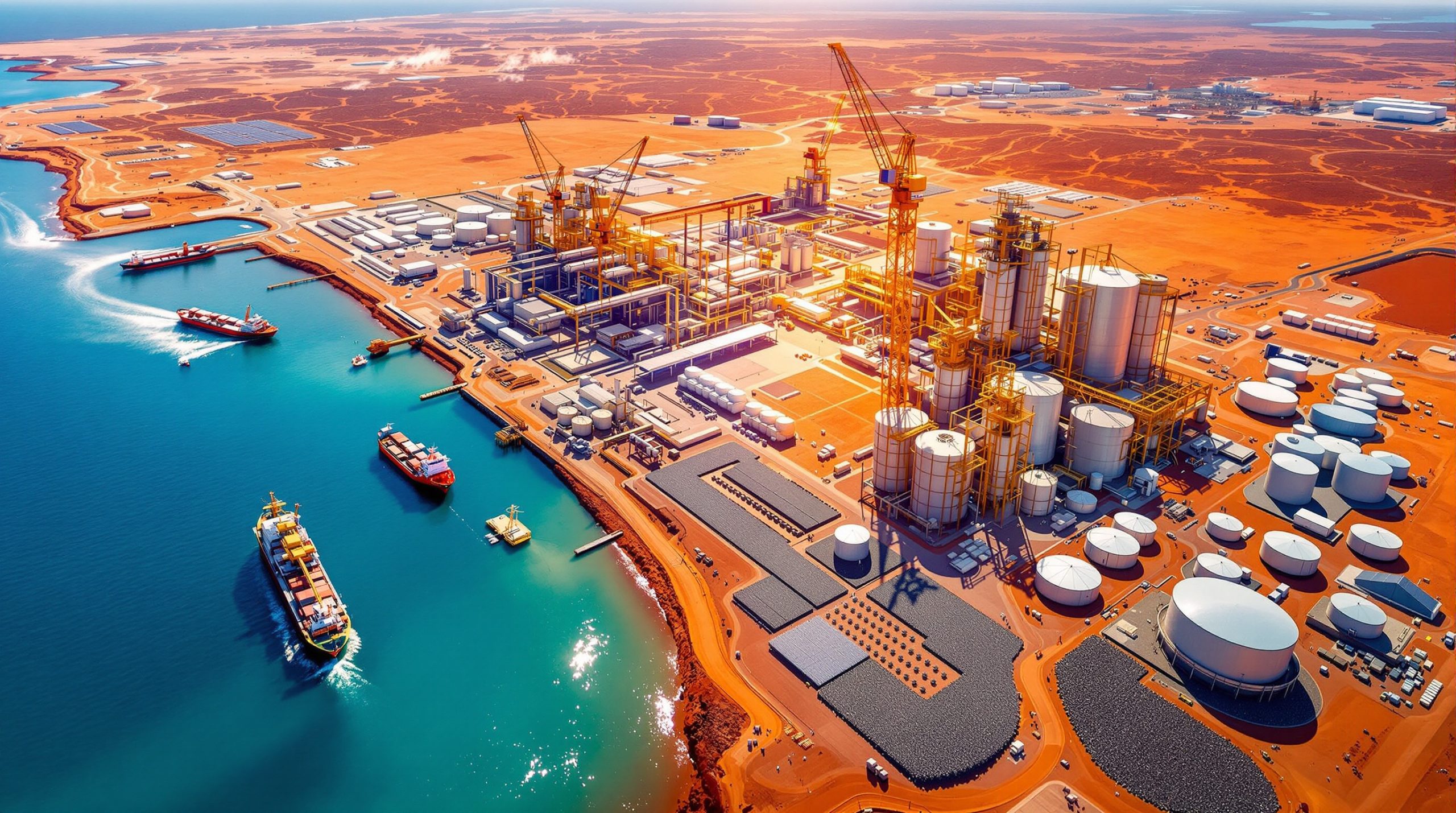Pilbara's Green Iron Revolution: Transforming Australia's Resource Sector
Australia stands at the cusp of a major industrial transformation with the development of green iron production in the Pilbara region. This emerging industry promises to revolutionize Australia's resource sector, providing economic opportunities while addressing climate challenges. As Western Australia moves closer to establishing itself as a green iron hub, understanding the implications of this shift becomes increasingly important for investors, policymakers, and communities.
What is Green Iron and Why Does it Matter?
Green iron, also known as green hot briquetted iron (HBI), represents a significant evolution in metal production. Unlike traditional iron ore exports, which require carbon-intensive processing overseas, green iron undergoes key reduction processes using renewable energy before export.
The fundamental difference lies in the reduction agent used. While conventional ironmaking relies on coal or natural gas, green iron production utilizes renewable hydrogen. This hydrogen reacts with iron ore to remove oxygen without the carbon emissions associated with fossil fuels, resulting in a premium iron product that can be directly used in electric arc furnaces for steelmaking.
This matters tremendously for both environmental and economic reasons. Traditional iron ore exports generate approximately $64 billion annually for Australia, as evidenced by the operations at Port Hedland, described as a "$64-billion-a-year port" by ABC News. However, by moving up the value chain from raw materials to processed green iron, Australia can potentially multiply this value significantly while reducing global carbon emissions.
Understanding the Green Iron Production Process
The green iron production process involves several key steps that differentiate it from conventional ironmaking:
- Renewable energy generation from solar, wind, or hydroelectric sources
- Hydrogen production through electrolysis powered by renewable electricity
- Direct reduction of iron ore using hydrogen instead of coal or natural gas
- Briquetting or pelletizing the reduced iron for transport and use in steelmaking
This process can reduce carbon emissions by up to 98% compared to traditional blast furnace methods, depending on the renewable energy percentage used. The resulting product contains fewer impurities than conventional iron, making it particularly valuable for high-grade steel production.
Economic Significance of Green Iron for Australia
The economic potential of green iron extends far beyond simple export revenues. While Australia has traditionally exported raw materials for processing elsewhere, green iron represents an opportunity to capture more of the manufacturing value chain domestically.
Key economic benefits include:
- Higher value products commanding premium prices in international markets
- Creation of skilled jobs in renewable energy, hydrogen production, and advanced manufacturing
- Reduced exposure to commodity price fluctuations through product diversification
- Potential establishment of downstream industries using green iron inputs
- First-mover advantage in an emerging global market for low-carbon materials
As global manufacturers face increasing pressure to decarbonize their supply chains, the demand for green materials like green iron is expected to grow substantially, positioning early producers advantageously.
How Has the Pilbara Project Progressed?
The journey toward green iron production in the Pilbara has reached a critical milestone with regulatory approval from Western Australia's environmental authorities. This achievement marks a significant advancement in Australia's ambition to move beyond simply exporting raw materials.
Environmental Approval Milestone
Western Australia's environmental regulator has recently granted approval for a major hot briquetted iron project in the Pilbara region, as reported by ABC News in August 2025. This regulatory clearance represents a crucial step in establishing Australia's position in the green iron market.
The approval process involved comprehensive assessment of:
- Greenhouse gas emissions throughout the production cycle
- Water consumption requirements and management strategies
- Land use impacts and rehabilitation commitments
- Air quality and particulate matter considerations
- Waste management and disposal protocols
Meeting these stringent environmental requirements demonstrates the project's commitment to sustainability while enabling industrial development, striking a balance that regulatory authorities deemed acceptable.
Technical Innovations in the Pilbara Project
The approved project incorporates several cutting-edge technologies that distinguish it from conventional iron processing facilities. These innovations include:
- Integrated renewable energy generation, primarily solar with battery storage
- Advanced hydrogen production and storage infrastructure
- Modified direct reduction furnaces optimized for hydrogen use
- Water conservation and recycling systems adapted for arid conditions
- Digital monitoring and optimization systems for process efficiency
These technical elements represent a significant departure from traditional ironmaking technologies used in Australia for decades. The integration of renewable energy and hydrogen systems is particularly notable, as it addresses the most emissions-intensive aspect of the iron production process.
What Makes Green Iron "Extraordinarily Lucrative"?
The description of the Pilbara a step closer to producing extraordinarily lucrative green iron points to the exceptional economic potential of this emerging industry. While specific pricing data wasn't provided in the available transcripts, multiple factors contribute to the product's high-value proposition.
Premium Pricing Potential
Green iron commands substantial price premiums in international markets for several compelling reasons:
-
Emissions reduction value: As industries worldwide face carbon pricing and emissions regulations, materials with lower carbon footprints become increasingly valuable.
-
Process efficiency benefits: Green iron has already undergone the energy-intensive reduction process, saving downstream users significant energy costs.
-
Quality advantages: The hydrogen-based reduction process typically results in fewer impurities than traditional methods, producing a cleaner product for high-grade applications.
-
ESG compliance value: Companies with environmental, social, and governance (ESG) commitments increasingly pay premiums for materials that help them meet sustainability targets.
The combination of these factors creates a market dynamic where green iron can potentially sell for multiples of the raw iron ore price, transforming Australia's resource economics.
Value-Added Manufacturing Opportunities
Beyond direct revenue from green iron sales, the development of this industry creates opportunities for additional value-added manufacturing in Australia. This represents a profound shift from the country's traditional role as primarily a raw materials exporter.
Potential value-adding opportunities include:
- Integration with local steel mini-mills using electric arc furnace technology
- Development of specialized green steel products for infrastructure and construction
- Manufacturing of hydrogen production and handling equipment
- Engineering services related to green manufacturing technologies
- Research and development facilities focusing on further process improvements
By developing these complementary industries, Australia can capture more of the value chain while creating more diversified and resilient regional economies less dependent on raw commodity exports.
Is Green Iron Truly Sustainable?
While marketed as a "green" product, the environmental credentials of green iron depend heavily on implementation details. A comprehensive sustainability assessment must consider multiple environmental dimensions beyond just carbon emissions.
Carbon Footprint Analysis
The carbon intensity of green iron production varies significantly based on several key factors:
-
Renewable energy percentage: True green iron requires 100% renewable energy for both hydrogen production and process heat. Any fossil fuel inputs significantly reduce the emissions benefits.
-
Production scale efficiency: Larger facilities typically achieve better energy efficiency than smaller demonstration plants, improving the emissions profile as the industry scales.
-
Scope of emissions accounting: Comprehensive assessment must include Scope 1 (direct), Scope 2 (energy), and Scope 3 (supply chain) emissions for accurate comparison with traditional methods.
-
Transportation considerations: The emissions associated with transporting the finished product must be factored into lifecycle assessments.
When implemented optimally, mining electrification trends in green iron production can reduce carbon emissions by 80-90% compared to traditional blast furnace routes, representing a transformative improvement in the materials sector's climate impact.
Water and Land Use Considerations
Beyond carbon emissions, green iron production presents other environmental challenges that must be carefully managed:
-
Water consumption: Hydrogen production through electrolysis requires significant water inputs, presenting challenges in the arid Pilbara region. Advanced water recycling and desalination systems may be necessary to ensure sustainable operations.
-
Land disturbance: Mining operations, processing facilities, and renewable energy mining installations all require substantial land area, potentially impacting local ecosystems and biodiversity.
-
Material inputs: The production of electrolyzers, solar panels, and other infrastructure components involves resource extraction and manufacturing processes with their own environmental footprints.
-
Waste management: Process residues and spent equipment must be properly handled, with recycling and safe disposal pathways established.
A truly sustainable green iron industry must address these broader environmental considerations through careful planning, technology selection, and ongoing monitoring to ensure that solving one environmental challenge doesn't create others.
How Does Green Iron Fit Into Australia's Industrial Strategy?
Green iron has emerged as a strategic priority within Australia's industrial policy framework, with high-level political support and alignment with national economic objectives.
Government Support and Policy Framework
The Australian government has demonstrated commitment to green metals leadership through various policy mechanisms and diplomatic initiatives. ABC News reported that Prime Minister Albanese highlighted the importance of green iron during his China trip in July 2025, indicating the industry's strategic significance.
Key elements of government support include:
- Research and development funding for hydrogen and green steel technologies
- Infrastructure investments in renewable energy and export facilities
- Potential tax incentives and investment allowances for green manufacturing
- Regulatory streamlining for projects meeting sustainability criteria
- International agreements to develop markets for green materials
This policy framework aims to position Australia advantageously in the emerging green materials economy while supporting broader economic diversification objectives.
Competition with International Producers
Australia faces emerging competition in the green iron sector from several regions with their own competitive advantages:
-
Sweden: Companies like H2 Green Steel and HYBRIT are developing hydrogen-based steel production with access to abundant hydroelectric power.
-
Brazil: Major iron ore producers are exploring green iron technologies leveraging the country's renewable energy resources.
-
Middle East: Nations with growing solar capacity and natural gas reserves are positioning to produce both blue and green hydrogen for industrial applications.
-
Russia: Traditional iron ore exporters are developing their own value-added strategies to maintain market relevance.
Australia's competitive advantages include existing infrastructure, mining expertise, and proximity to Asian markets. However, maintaining leadership will require continued innovation, particularly in reducing production costs and scaling technology rapidly.
What Challenges Remain for Green Iron Development?
Despite its promising outlook, green iron faces several significant challenges that must be overcome to achieve commercial success at scale.
Scaling Production Technologies
While pilot projects have demonstrated technical feasibility, scaling green iron production to commercial volumes presents considerable engineering challenges:
-
Cost-effective hydrogen production: Current electrolysis technologies remain expensive at scale, requiring further cost reductions through technical innovation and manufacturing improvements.
-
Continuous process optimization: Maintaining consistent quality across large production volumes requires sophisticated process control systems adaptable to varying input conditions.
-
Energy integration complexity: Balancing intermittent renewable energy with continuous industrial processes necessitates advanced energy management systems and adequate storage capacity.
-
Equipment reliability: Operating in remote locations demands exceptional reliability and maintainability from specialized equipment with limited service support.
Overcoming these technical barriers requires substantial investment in research, development, and demonstration projects to prove commercial viability before full-scale deployment.
Infrastructure Requirements
Green iron production demands specialized infrastructure beyond what exists for traditional iron ore mining, presenting significant development challenges in remote regions:
-
Renewable energy capacity: Gigawatt-scale solar, wind, or other renewable generation is needed to power hydrogen production and processing operations.
-
Water supply systems: Secure water sources, treatment facilities, and recycling systems must be developed, particularly challenging in the arid Pilbara.
-
Hydrogen handling facilities: Specialized equipment for production, compression, storage, and utilization of hydrogen at industrial scale requires significant investment.
-
Export infrastructure: Port facilities may require modifications to handle different product characteristics compared to traditional iron ore.
-
Workforce accommodations: Attracting and retaining skilled workers in remote locations requires investment in housing, services, and community infrastructure.
The development timeline for this infrastructure represents a significant portion of the overall project schedule, requiring careful coordination and substantial capital investment before production can begin.
What Impact Will Green Iron Have on Traditional Steel Regions?
The rise of green iron production in the Pilbara creates complex implications for Australia's established steel industry centers, presenting both challenges and opportunities for regional economies.
Disruption to Established Steel Centers
ABC News reported in December 2024 that Port Kembla, described as the "home of steel making," faces an uncertain future following Western Australia's success in securing a green iron pilot plant. This uncertainty reflects the potential for significant industry restructuring as production methods and locations evolve.
Key concerns for traditional steel regions include:
- Potential job losses if conventional facilities cannot compete with newer technologies
- Reduced capital investment in existing operations as funding flows to emerging green projects
- Challenges in retraining workforces for different production methods
- Economic impacts on supporting businesses and regional communities
- Reduced political and economic influence as industry focus shifts to new regions
Labor unions have expressed particular concern about these transitions, highlighting the need for inclusive planning that considers worker welfare alongside environmental and economic objectives.
Opportunities for Regional Transformation
While presenting challenges, the green iron revolution also creates opportunities for industrial transformation in traditional steel regions:
- Retrofitting existing facilities with green technologies to remain competitive
- Leveraging established workforce skills and industrial infrastructure for new applications
- Developing specialized downstream manufacturing using green iron inputs
- Creating research and development hubs focused on advanced materials technology
- Establishing training centers for upskilling workers in renewable energy and hydrogen technologies
These transformation opportunities require proactive planning, targeted investments, and collaborative approaches involving government, industry, unions, and community stakeholders to ensure equitable transitions.
How Will Green Iron Affect Australia's Trade Relationships?
The development of green iron capabilities promises to reshape Australia's trade dynamics, particularly with key partners like China while potentially opening new market opportunities globally.
Changing Dynamics with China
China has historically been Australia's largest iron ore customer, but this relationship is evolving due to multiple factors. ABC News has reported that China's cooling property market is affecting iron ore demand, with potential implications for Australia's export revenues.
The emergence of green iron introduces new dimensions to this relationship:
-
Value proposition shift: Rather than bulk commodity trading, green iron represents a higher-value, specialized product category.
-
Alignment with China's climate goals: As China pursues its own carbon reduction targets, demand for green materials may increase despite slowing construction activity.
-
Competition with domestic production: China is developing its own green steel capabilities, potentially reducing import needs for certain products.
-
Strategic considerations: Critical minerals and green technologies have become increasingly politicized, adding complexity to trade relationships.
Navigating these changing dynamics requires diplomatic skill and commercial adaptability, as well as diversification strategies to reduce dependency on any single market.
Diversification of Export Markets
The development of green iron capabilities enables Australia to diversify its export markets beyond traditional buyers. As ABC News noted, iron ore price declines could "wipe $3 billion from federal budget," highlighting the risks of overdependence on conventional exports.
Promising alternative markets include:
-
European Union: Stringent carbon regulations and border adjustment mechanisms create demand for low-carbon materials.
-
Japan and South Korea: Both countries have ambitious decarbonization goals but limited domestic renewable resources for green production.
-
United States: Growing focus on reshoring manufacturing with sustainable inputs creates potential market opportunities.
-
Emerging economies: Nations building infrastructure while pursuing climate goals represent growing markets for green construction materials.
This market diversification reduces Australia's vulnerability to economic or political disruptions in any single trading relationship while opening new revenue opportunities across a broader customer base.
What Does the Future Hold for Green Iron?
Looking ahead, the green iron industry faces a dynamic future shaped by technological evolution, market development, and policy landscapes.
Projected Market Growth
The global market for green iron and related low-carbon materials is projected to grow substantially in coming decades, driven by several reinforcing trends:
- Increasingly stringent carbon regulations in major economies
- Corporate commitments to supply chain decarbonization
- Growing investor preference for climate-aligned businesses
- Technological improvements reducing production costs
- Expanding applications for green materials beyond traditional uses
Industry analysts project that green iron could capture a significant portion of the global iron market by 2035, though the pace of adoption will depend on policy support, technological progress, and relative cost competitiveness with conventional products.
Integration with Broader Green Manufacturing
Green iron represents just one component of an emerging green manufacturing ecosystem that includes multiple interconnected elements:
- Renewable hydrogen production serving multiple industrial applications
- Green aluminum production using similar low-carbon principles
- Recycled materials integration into manufacturing processes
- Advanced manufacturing techniques optimized for sustainable materials
- Circular economy approaches to product design and material recovery
The integration of these various elements creates potential for Australia to develop comprehensive green industrial capabilities, fundamentally transforming its position in global supply chains from raw material provider to sophisticated manufacturer of climate-aligned products. These developments align with broader decarbonisation benefits that extend well beyond environmental considerations.
FAQ: Green Iron Production in the Pilbara
What is the difference between green iron and traditional iron ore?
Green iron is a processed form of iron that has undergone the reduction process using renewable hydrogen rather than coal or natural gas. Unlike raw iron ore, which requires carbon-intensive processing by the buyer, green iron has already completed the most emissions-intensive part of the steelmaking process using renewable energy. This results in a higher-value product with significantly lower embedded carbon emissions.
The key differences include:
- Green iron is ready for direct use in electric arc furnaces for steelmaking
- Traditional iron ore requires blast furnace processing with coking coal
- Green iron has a carbon footprint up to 90% lower than conventional routes
- Green iron typically contains fewer impurities due to the production process
How much more valuable is green iron compared to raw iron ore?
Green iron products can potentially command 3-5 times the price of raw iron ore on global markets, depending on quality specifications and carbon intensity. This price premium reflects both the additional processing value and the environmental benefits that help steel manufacturers reduce their emissions footprint.
Factors affecting the price premium include:
- Carbon intensity certification and verification
- Technical specifications and purity levels
- Market demand for green steel products
- Regulatory environments in destination markets
- Availability of competing low-carbon alternatives
What renewable energy sources will power the Pilbara green iron project?
The Pilbara project will primarily utilize solar energy, supplemented by wind power and battery storage systems. The region's abundant solar resources make it ideal for renewable hydrogen production, with average daily solar radiation among the highest in the world. This renewable energy mix enables truly low-carbon iron production.
The energy system design includes:
- Large-scale solar photovoltaic arrays covering hundreds of hectares
- Battery storage systems to manage intermittency
- Potential wind energy integration in coastal areas
- Smart grid technologies to optimize energy usage
- Hydrogen storage to buffer production fluctuations
This integrated energy approach ensures continuous industrial operation despite the inherent variability of renewable energy sources, a critical requirement for commercial-scale production. These systems represent significant mining industry innovation that is transforming how resource extraction and processing is conducted in Australia.
Want to Discover the Next Major Resource Opportunity?
Stay ahead of the market with Discovery Alert's proprietary Discovery IQ model, which instantly notifies investors of significant ASX mineral discoveries and transforms complex data into actionable insights. Explore our dedicated discoveries page to understand how major mineral discoveries can generate substantial returns, and begin your 30-day free trial today.




